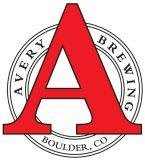 I just finished reading a nicely written article - Single Sippin' - by California based beer writer Alastair Bland. If you're a beer lover you'd do well to follow this gentleman in his travels through the beer world, as he is always putting out well informed and intriguing articles on all things beer. After reading his article I thought it would be fitting to share some opinions on single hopped beers:
I just finished reading a nicely written article - Single Sippin' - by California based beer writer Alastair Bland. If you're a beer lover you'd do well to follow this gentleman in his travels through the beer world, as he is always putting out well informed and intriguing articles on all things beer. After reading his article I thought it would be fitting to share some opinions on single hopped beers: 1. We love them.
2. Yes, Simcoe does smell like cat-urine if used in large quantities. Avery Brewing does not recommend it.
3. As for Columbus, well, let's just say that if we were smarter and better with plants we'd be trying to breed a strain that is even more "dank". In the meantime, we're sticking to brewing and crossing our fingers that the hop powers that be in Yakima share our sentiments.
4. Single hopping has the potential to make indelibly unique beers (See Hog Heaven Barleywine Style Ale for a case in point). True, you may narrow your audience of potential drinkers, but if you like it then who is to say that it's not worthy of a bottle?
5. A long overdue renaissance in single hopping may be gripping the industry (yeeeeaaaa!), but surely it is not a new thing. We've been brewing Hog Heaven for 11 years now, and never once has a hop variety other than Columbus been thrown into the kettle or the fermenter. So far sooooo good. If you don't like it don't drink it, that means more for us!
6. Single hop brews are an invaluable way to boost your knowledge of individual hop characteristics, not to mention a great way to figure out which varieties you prefer. Once you know what you like, you can pick out new brews to hunt down based on their hop profile.
All this hop talk begs the question: How will the craft beer world address hops--and other ingredients-- going forward? In this country to date, the brew sheet and hop schedule seem to have been a quiet casualty of the "industrial" stigma traditionally associated with the domestic light lagers everyone used to drink. That is to say, beer has always been viewed as a highly processed product, and consumers paid as little attention to the hops and malt in their Budweiser as they did the tomatoes in a can of Campbell's Tomato Soup.
As the craft beer movement continues to evolve, will brewers and consumers grow more interested in agricultural inputs like hops and malt, with an emphasis on variety and region akin to the wine world? Some are sure to point out that the beer industry--with its vertically oriented supply chain wherein hops are grown and processed (albeit minimally) by entities separate from the brewery--will never achieve the same level of regional identity as wine. Maybe, but widen your focus and look at some other food trends in this country, notably the localvore movement and the growing popularity of sustainably harvested products, and local hops seems a lot less of a pipe dream.
Local or not, I hope that single hop brews prove to be more than just a trend. But who knows, maybe Hog Heaven (with Columbus hops grown in Boulder, CO) will have the chance to be entered into the "Columbus Hopped" style category at the 2025 GABF. Even if the GABF category doesn't pan out, I'll be quite content so long as I can continue to be "single sippin'" well into the future.
Now for a Hog.
C.V.

With the exception of an Avery-inspired hop bomb, I only use 1-2 types of hops in most of my homebrews. It's really allowed me to discover the characteristics different types of hops bring to the party and being able to identify hop types in commercial beers just by tasting is a bonus.
ReplyDeleteNice post. I tried my first single-hop beer a few weeks ago, a Sorachi Ace-hopped IPA at Block 15 Brewing in Corvallis, Oregon. I hope more breweries get on this bandwagon.
ReplyDelete